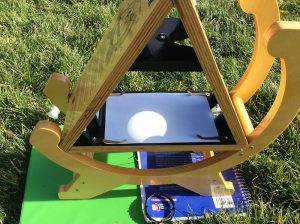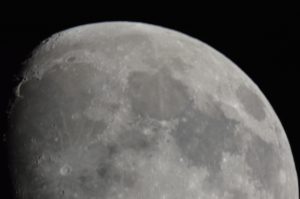Astronomical Events 2018-2019

 As the 2018-2019 school year begins, here is an overview of a few astronomical events to keep an eye out for:
As the 2018-2019 school year begins, here is an overview of a few astronomical events to keep an eye out for:
September 22: The September Equinox is at 7:54pm MDT. On this day, the Sun crosses the celestial equator. In Denver, it is our Autumnal Equinox and is our first day of Fall. This day will have equal amounts of day and night.
October 8: The Draconids Meteor Shower peaks during this time maxing at about 10 meteors per hour. The meteoroid particles come from the comet 21 Giacobini-Zinner. The radiant of this shower is in the constellation of Draco.
October 21 & 22: The Orionids Meteor Shower peaks during this time maxing at about 20 meteors per hour. The meteoroid particles come from the comet Halley. The radiant of this shower is in the constellation of Orion.
November 5 & 6: The Taurids Meteor Shower peaks during this time maxing at about 10 meteors per hour. The meteoroid particles come from the comet 2P Encke and asteroid 2004 TG10. The radiant of this shower is in the constellation of Taurus.
November 17 & 18: The Leonids Meteor Shower peaks during this time maxing at about 15 meteors per hour. The meteoroid particles come from the comet Tempel-Tuttle. The radiant of this shower is in the constellation of Leo.
December 13 & 14: The Geminids Meteor Shower peaks during this time maxing at about 120 meteors per hour. The meteoroid particles come from the asteroid 3200 Phaethon. The radiant of this shower is in the constellation of Gemini.
December 21: The December solstice is at 3:23pm MDT. In Denver on this day the Sun reaches the lowest daily maximum in the sky and has the least hours of sunlight. In Denver, is is our Winter Solstice and is our first day of winter.
December 21 & 22: The Ursids Meteor Shower peaks during this time maxing at about 10 meteors per hour. The meteoroid particles come from the comet Tuttle. The radiant of this shower is in the constellation of Ursa Minor.
January 3 & 4: The Quadrantids Meteor Shower peaks during this time maxing at about 40 meteors per hour. This meteoroid particles come from the comet 2003 EH1. The radiant of this shower is in the constellation of Bootes, meaning that the meteors appear to originate in that constellation. This is due to the Earth’s path through comet 2003 EH1’s debris cloud.
January 20: A Total Lunar Eclipse peaking at 10:15pm MST. A lunar Eclipse occurs when the Moon moves into the Earth’s shadow during a Full Moon. This Full Moon is also a supermoon, meaning the Moon is a bit closer to Earth due to its elliptical orbit. The eclipse will start at 7:30pm MST and continue until 12:45am MST.
March 20: The March equinox is at #:58pm MDT. On this day, the Sun crosses the celestial equator. In Denver, it is our Vernal Equinox and is our first day of spring. This day will have equal amounts of day and night.
April 22 & 23: The Lyrids Meteor Shower peaks during this time maxing at about 20 meteors per hour. The meteoroid particles come from the comet C/1861 G1 Thatcher. The radiant of this shower is in the constellation of Lyra.
May 6 & 7: The Eta Aquarius Meteor Shower peaks during this time maxing at about 30 meteors per hour. The meteoroid particles come from the comet Halley. The radiant of this shower is in the constellation Aquarius.
June 21: The June solstice is at 9:54am MDT. In Denver on this day the Sun reaches the highest daily maximum in the sky and has the most hours of sunlight. In Denver, is is our Summer Solstice and is our first day of summer.
July 28 & 29: The Delta Aquarids Meteor Shower peaks during this time maxing at about 20 meteors per hour. The meteoroid particles come from the comets Marsden and Kracht. The radiant of this shower is in the constellation Aquarius.
August 12 & 13: The Perseid Meteor Shower peaks during this time maxing at about 60 meteors per hour. The meteoroid particles come from the comet Swift-Tuttle. The radiant of this shower is in the constellation of Perseus.  Enjoy Observing the Sky in this school year! Come to our Astronomy Star Parties at the Littleton and Parker campuses each semester. Anyone can join us at these free events. We'll provide the telescope and refreshments. You just need to dress for the weather as we'll be outside. If you're a student, become a member of Astronomy Club or take one of our classes. They are guaranteed to transfer. Please join the ACC Astronomy Department on twitter by following @AstronomyatACC to learn of interesting astronomy news as well as events around campus.
Enjoy Observing the Sky in this school year! Come to our Astronomy Star Parties at the Littleton and Parker campuses each semester. Anyone can join us at these free events. We'll provide the telescope and refreshments. You just need to dress for the weather as we'll be outside. If you're a student, become a member of Astronomy Club or take one of our classes. They are guaranteed to transfer. Please join the ACC Astronomy Department on twitter by following @AstronomyatACC to learn of interesting astronomy news as well as events around campus.
